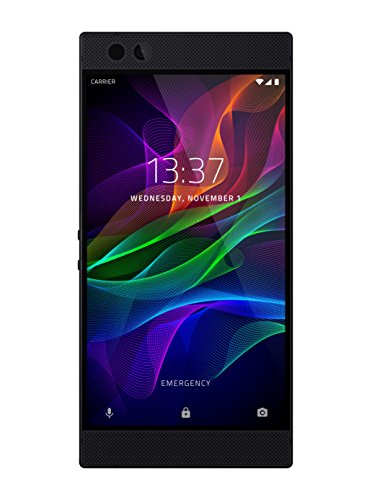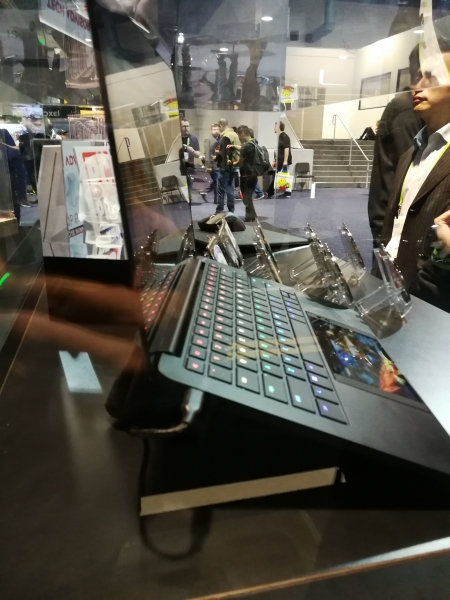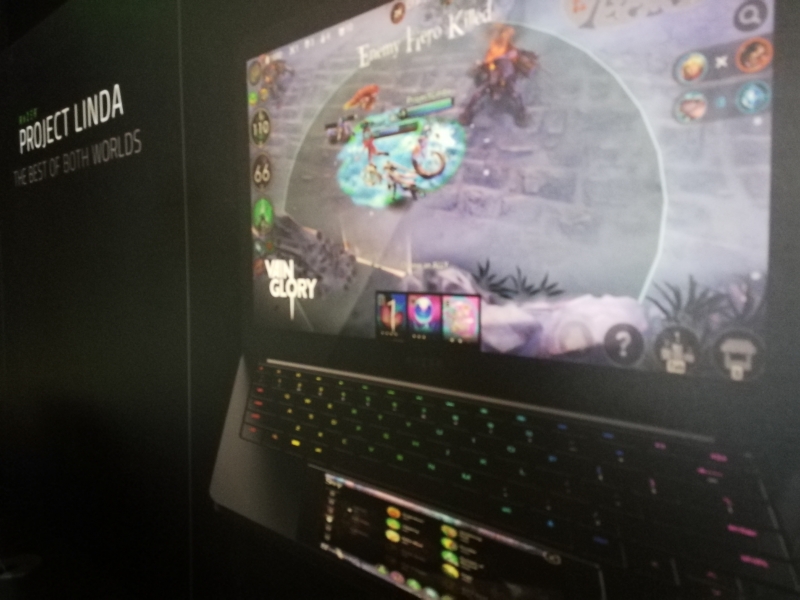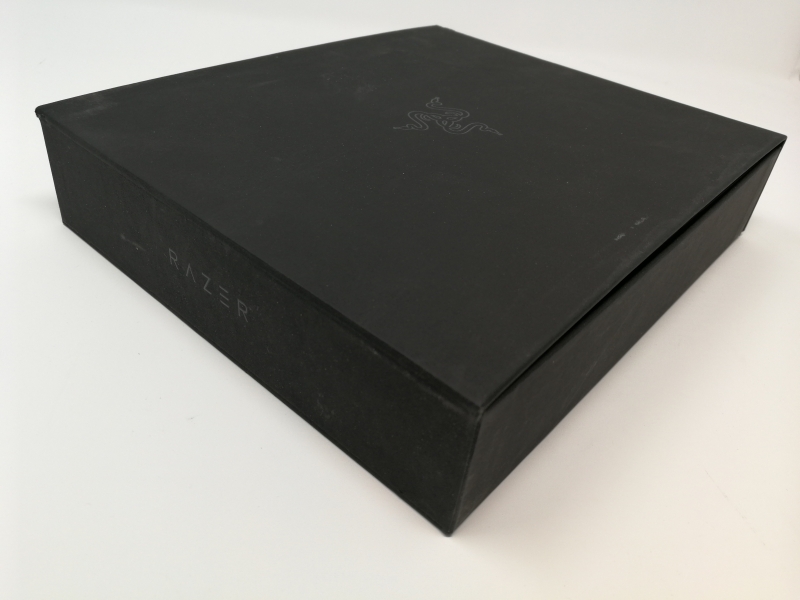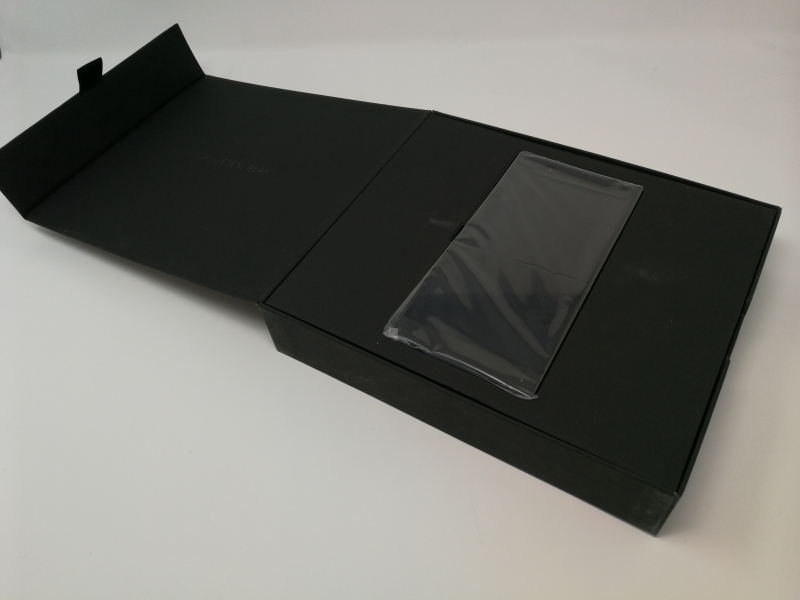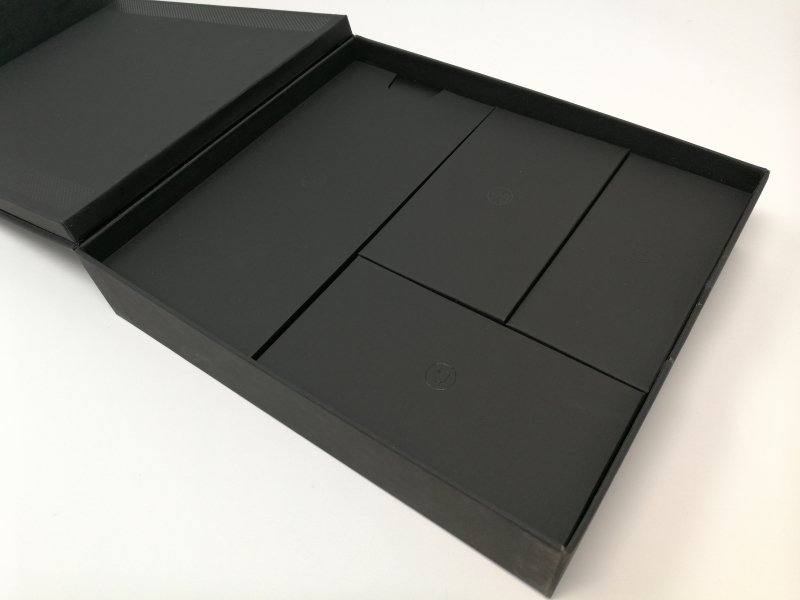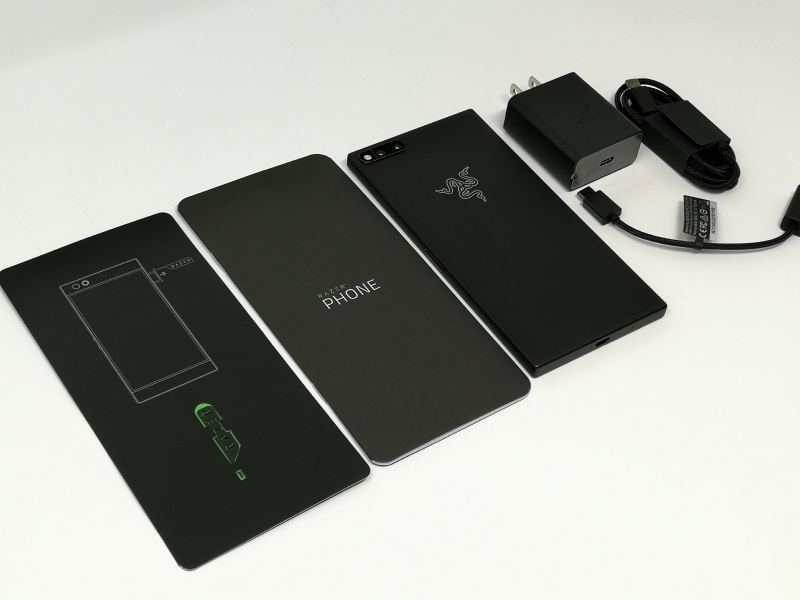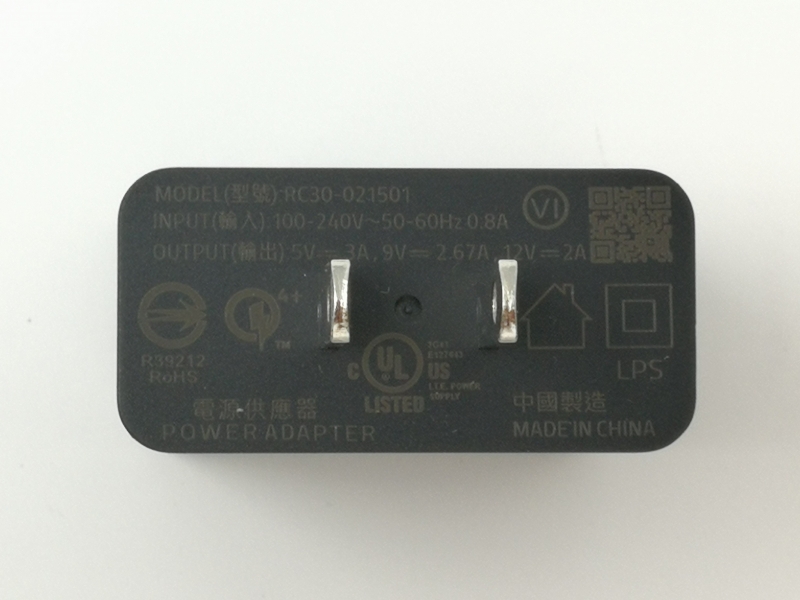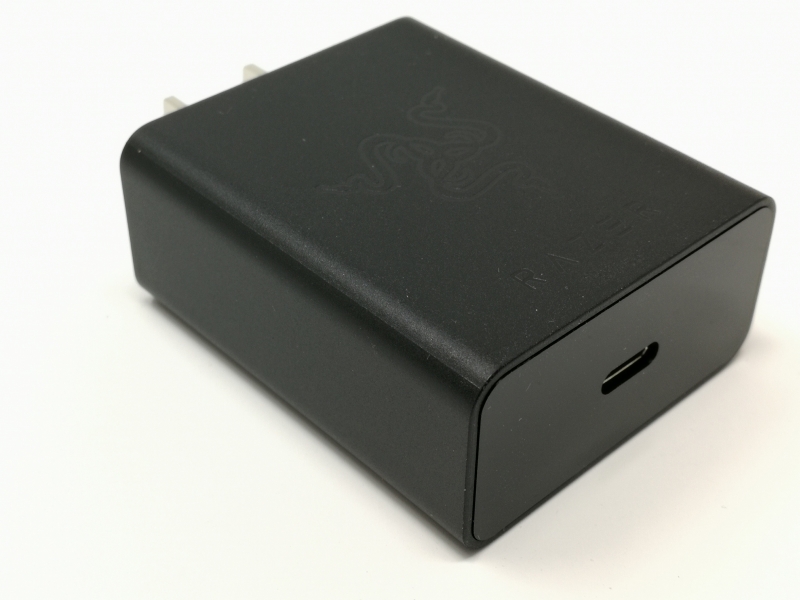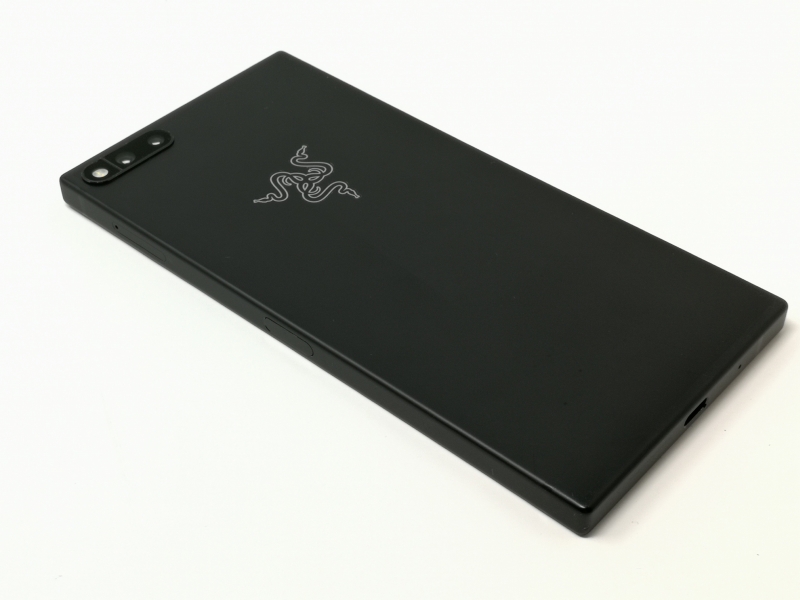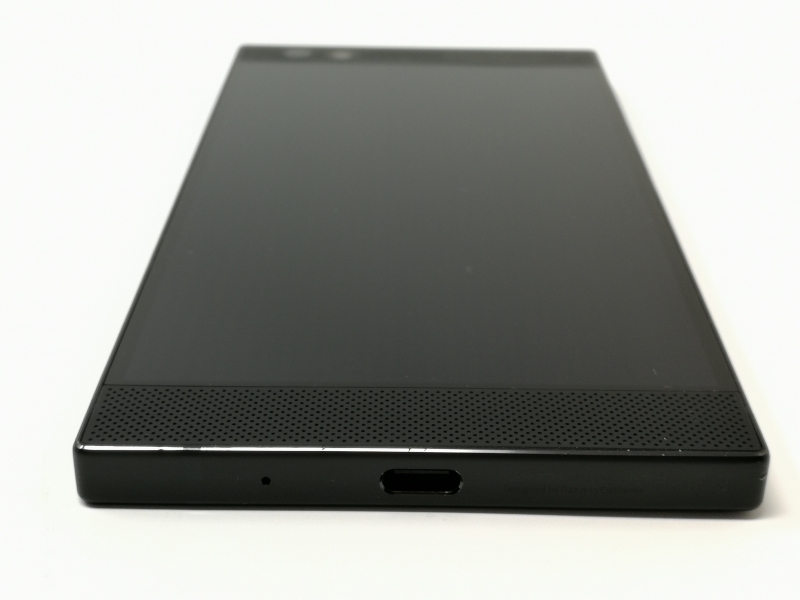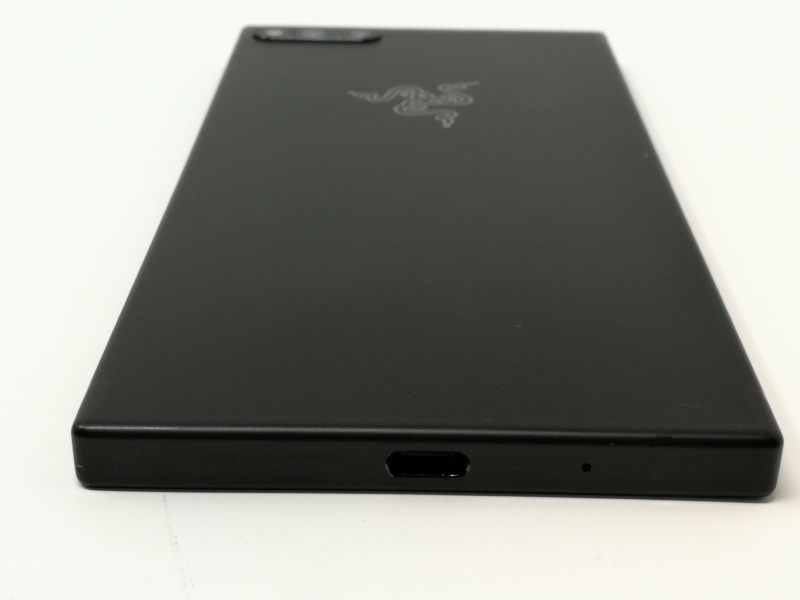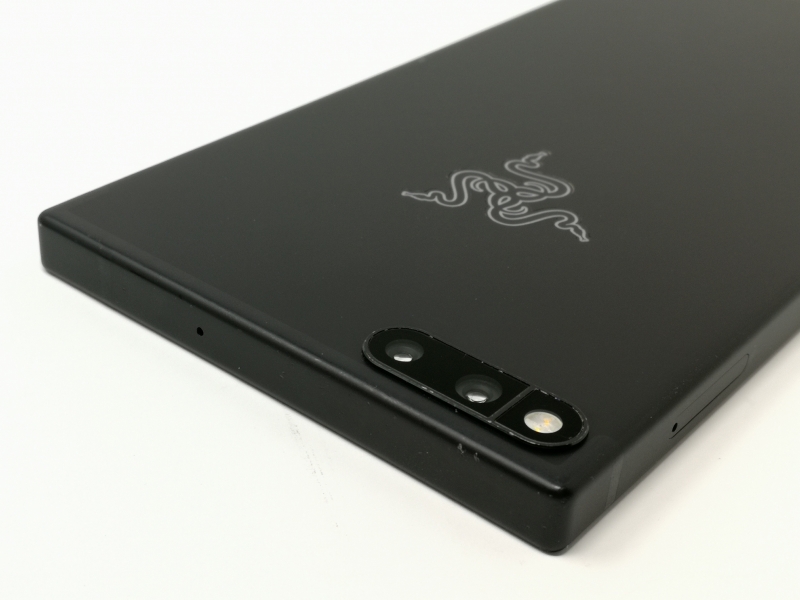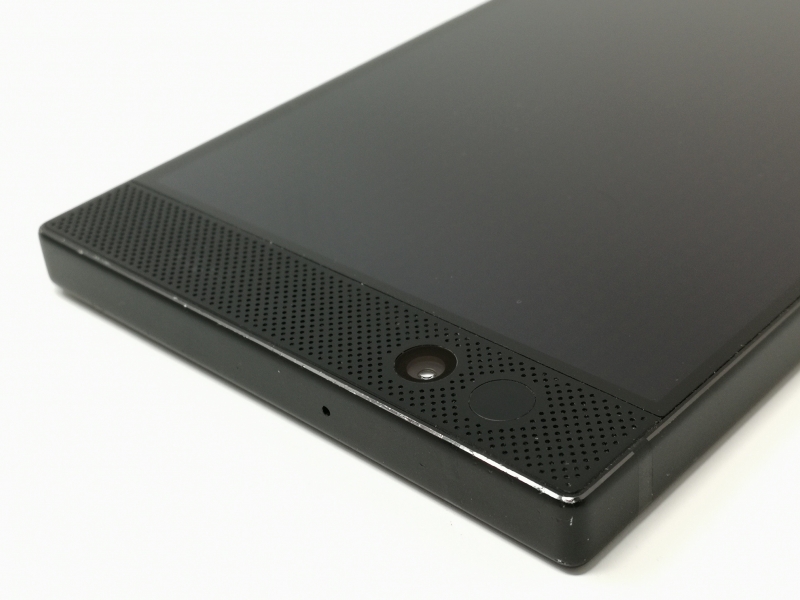Razer is well known for PC gaming accessories and laptops so people may be surprised with the Razer Phone, which Razer is positioning for gamer enthusiasts.
The Razer Phone was one of their highlights at CES 2018 where they demonstrated how the phone could be used in Project Linda, a notebook PC which is essentially a docking station for the phone. Taking advantage of the phone's DisplayPort Alternate Mode and USB over its USB Type-C connector, the notebook PC lets you use the phone as your trackpad so you can achieve a touch experience similar to the MacBook Pro's Touch Bar while using the notebook PC's display and keyboard to create a PC-like gaming experience using your phone. The notebook PC dock of course keeps your phone charged through USB Power Delivery.
We purchased the Razer Phone through Amazon which arrived in very premium looking black packaging with textured material.
The Razer Phone comes with a Qualcomm Quick Charge 4+ certified 24W charger, USB Type-C to Type-C cable, a USB Type-C to 3.5mm audio adapter, and documentation.
The Razer 24W charger is marked with the Qualcomm Quick Charge 4+ logo and is labeled to support 15 watts (5 volts @ 3 amps), 24 watts (9 volts @ 2.67 amps), and 24 watts (12 volts @ 2 amps). However, based on our internal testing, we can confirm that this charger supports USB PD 3.0 based Programmable Power Supply (PPS) and has two Augmented Power Delivery Objects (APDO's) with two different voltage ranges.
The Razer Phone itself is designed as a high quality premium phone and supports 120 Hz refresh rates, wide color gamut, HDR 10, and Dolby Digital Plus 5.1.
The Razer Phone supports a single USB Type-C connector and an external SD card slot.
To see how the power profile looks like for the Razer Phone, we used the USB Power Test App from Granite River Labs with the Granite River Labs USB Power Delivery Compliance C2 Tester to generate the following test results.
The USB Power Test App first negotiates a power contract emulating the Source to determine the Power Delivery Sink capabilities of the Razer Phone. The USB Power Test App then reports out the voltage and current supported by the Razer Phone for each of the Source PDO's advertised to the phone.
| Sink Cap. | Voltage (V) | Current (A) |
|---|---|---|
| 5V | 5.1 | 2.2 |
| 6V | 6.07 | 1.8 |
| 7V | 5.11 | 2.21 |
| 8V | 8.08 | 1.34 |
| 9V | 5.07 | 2.13 |
| 10V | 5.11 | 2.11 |
| 11V | 5.14 | 2.13 |
| 12V | 5.07 | 2.19 |
| 13V | 5.11 | 2.13 |
| 14V | 5.11 | 2.12 |
| 15V | 5.07 | 2.21 |
| 16V | 5.09 | 2.14 |
| 17V | 5.11 | 2.21 |
| 18V | 5.11 | 2.13 |
| 19V | 5.13 | 2.12 |
| 20V | 5.08 | 2.21 |
The USB Power Test App from Granite River Labs also produces a voltage, current trace plot which graphically shows the voltage and current requested by the Razer Phone for each advertised Source PDO throughout the power negotiation.
Using the USB Power Delivery Compliance C2 Tester from Granite River Labs to run just a subset of the full USB Power Delivery compliance test suite, we can see that the Razer Phone supports these PDO's- 7.5 watts (5 volts @ 1.5 amps), 15 watts (5 volts @ 3 amps), 27 watts (9 volts @ 3 amps), and 27 watts (12 volts @ 2.25 amps) for charging. Note some compliance failures were observed. We can also see that the phone uses a Qualcomm based USB Power Delivery solution.
Product Capabilities
Parameter
|
GetCapabilities
|
|---|---|
UUT_Device_Type
|
|
Vendor_Name
|
Qualcomm, Inc
|
Power Capabilities
Parameter
|
GetCapabilities
|
|---|---|
PD_Power_as_Sink
|
|
Supply Type #1
|
Fixed
|
Voltage #1
|
0x64(5V)
|
OP Current #1
|
0x12C(3A)
|
Supply Type #2
|
Fixed
|
Voltage #2
|
0xB4(9V)
|
OP Current #2
|
0x12C(3A)
|
Supply Type #3
|
Fixed
|
Voltage #3
|
0xF0(12V)
|
OP Current #3
|
0xE1(2.25A)
|
No of Source PDOs
|
|
Supply Type #1
|
Fixed
|
Peak Current #1
|
0x0(A)
|
Voltage #1
|
0x64(5V)
|
Max Current #1
|
0x96(1.5A)
|
Result Summary
Sl No
|
Test ID
|
Test Name
|
Test Result
|
|---|---|---|---|
1
|
TDA.2.1.1.1
|
BMC-PHY-TX-EYE
|
PASS
|
2
|
TDA.2.1.1.2
|
BMC-PHY-TX-BIT
|
PASS
|
3
|
TDA.2.1.2.2
|
BMC-PHY-RX-INT-REJ
|
PASS
|
4
|
TDA.2.1.2.1
|
BMC-PHY-RX-BUSIDL
|
PASS
|
5
|
TDA.2.1.3.1
|
BMC-PHY-TERM
|
PASS
|
7
|
TDA.2.2.1
|
BMC-PROT-SEQ-GETCAPS
|
PASS
|
10
|
TDA.2.2.5
|
BMC-PROT-DISCOV
|
PASS
|
12
|
TDA.2.2.7
|
BMC-PROT-BIST-NOT-5V-SRC
|
PASS
|
14
|
TDA.2.3.1.1
|
POW-SRC-LOAD-P-PC
|
PASS
|
15
|
TDA.2.3.1.2
|
POW-SRC-LOAD-CP-ACC
|
PASS
|
18
|
TDA.2.3.3.2
|
POW-SNK-TRANS-PC
|
FAIL
|
19
|
TDB.2.2.9
|
BMC-PROT-GSC-REC
|
PASS
|
BMC Eye Diagram
The Razer Phone showcases the full extent of the Qualcomm Snapdragon 835 platform allowing the phone to support DisplayPort for video output, and USB Power Delivery 2.0, Power Delivery 3.0, Qualcomm Quick Charge 2.0, Quick Charge 3.0, and Quick Charge 4/4+ chargers over a single USB Type-C port.
View Recommended Products for Razer Phone
 GTrusted
GTrusted

